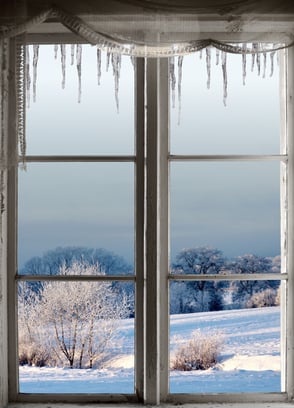
More than 90 percent of homes throughout the nation are expected to experience higher heating costs this winter as compared to last year, according to the U.S. Energy Information Administration’s Short-Term Energy and Winter Fuels Outlook. The higher projected costs of residential natural gas, as well as propane and electricity, are the biggest culprits.
In addition to taking a hard financial hit during the wintertime, our environment also pays a heavy price. Electricity production causes approximately one-third of greenhouse gas emissions, and 11 percent of greenhouse emissions are due to the use of fossil fuels that are burned to heat homes and businesses, notes the EPA.
Fortunately, there are a number of eco-friendly options for battling the cold and living more comfortably that can lessen the impact on your pocketbook as well as our planet.
Dress up your windows
Trapping more heat inside your home can be accomplished by using window shades and blinds that are made to keep cold weather out and the warm air in. Windows account for 25 percent of heat and air loss in a home. Installing cellular shades can help save heating costs in the winter as well as the cost of cooling your home in the summer.
For optimal insulation, as well as good aesthetics, be sure that your window treatments, shades, or draperies properly fit the window space. Look for cracks in window frames, and seal them with caulk in order to maximize heat conservation.
Fun do-it-yourself projects
Those cold, dark days often mean boredom for the kids. Help keep them entertained with one of these useful craft ideas for keeping warm.
- Draft snake: This is a great way to keep cold air from sneaking in. All you need is a piece of material that is eight inches wide and five inches longer than the width of your door. Fold the fabric with the back side and long edges together, and then sew one end to create a 4-inch wide tube. Trim the seam to 1/4 inch and then turn the tube right side out. Pour some type of filler into the tube, such as dried beans, dried corn, or rice. Fold the seam in and then sew it firmly together. Now, let the kids in on the fun by adding a piece or red ribbon for the snake’s tongue and two beads for the eyes. When your door is closed it can be placed against the bottom to prevent a draft while also adding a bit of whimsical décor to your home.
- Rice heating bag. Rice heating bags are a great alternative to electric heating pads or electric blankets. Older kids and teens will have no trouble making these; it may be a good opportunity for you to teach them how to sew, or let them get some more practice. Just cut two pieces of 100 percent cotton fabric in the size or shape you desire, leaving about a ½-inch seam. Cut and sew the material together, leaving an inch open on one side so that it can be filled with uncooked rice. Don’t fill it too full, about three-quarters is usually just right. Next, sew the opening closed. When you’re ready to use it just zap it in the microwave for about 20 seconds or so and you’ll have the perfect item for warming up on a chilly day or even soothing aches and pains.
Alternative heating source
A pellet burning stove is a cheaper alternative to utilizing fuel oil, propane, or electricity to heat your home. According to Energy.gov, it produces very little air pollution and is considered to be the cleanest solid fuel, residential heating appliance. These stoves burn pellets made from a variety of materials, such as wood chips, corn kernels and other biological materials that are easy to work with and also offer a higher combustion efficiency compared to wood.

